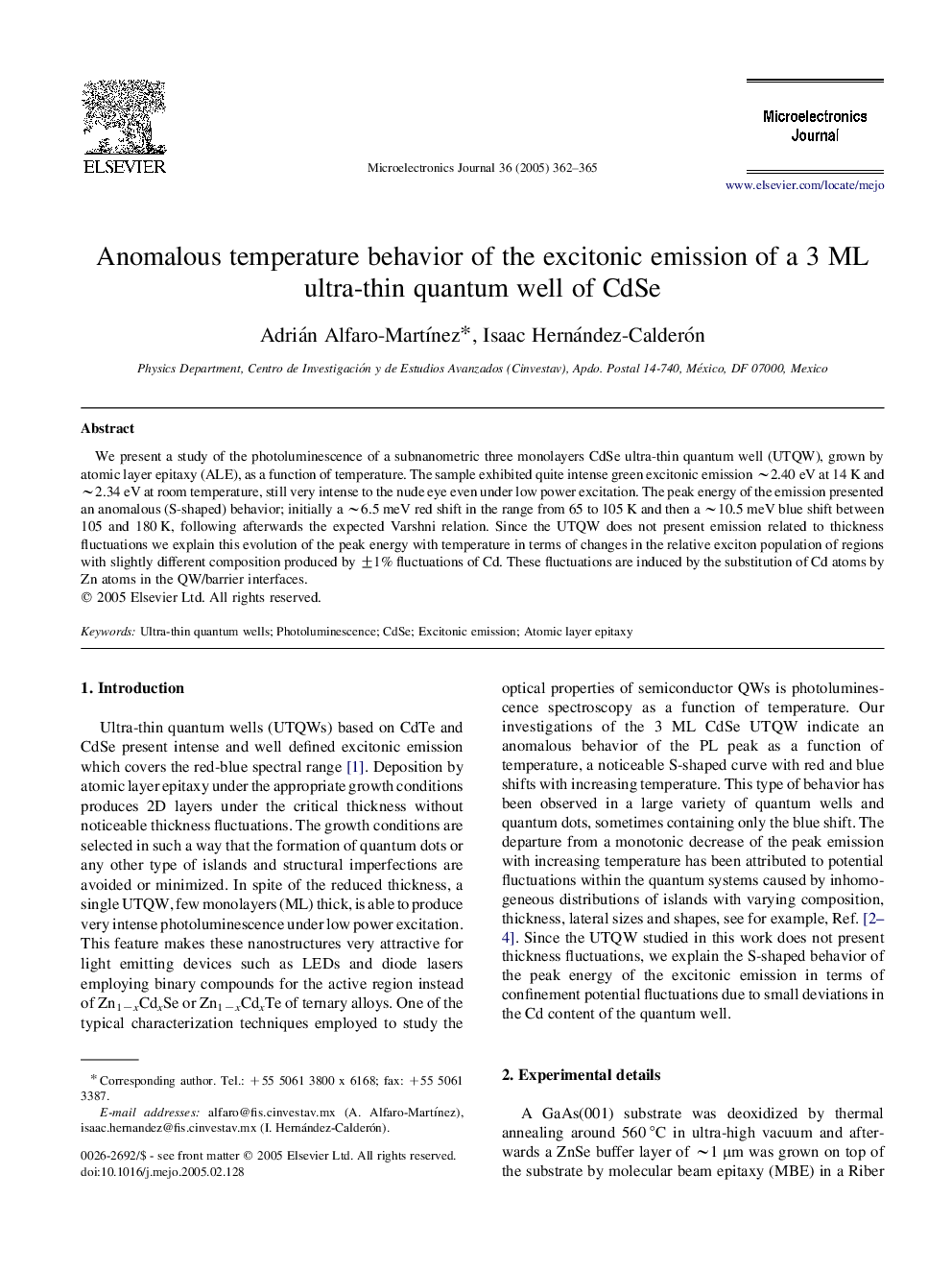| Article ID | Journal | Published Year | Pages | File Type |
|---|---|---|---|---|
| 9671907 | Microelectronics Journal | 2005 | 4 Pages |
Abstract
We present a study of the photoluminescence of a subnanometric three monolayers CdSe ultra-thin quantum well (UTQW), grown by atomic layer epitaxy (ALE), as a function of temperature. The sample exhibited quite intense green excitonic emission â¼2.40 eV at 14 K and â¼2.34 eV at room temperature, still very intense to the nude eye even under low power excitation. The peak energy of the emission presented an anomalous (S-shaped) behavior; initially a â¼6.5 meV red shift in the range from 65 to 105 K and then a â¼10.5 meV blue shift between 105 and 180 K, following afterwards the expected Varshni relation. Since the UTQW does not present emission related to thickness fluctuations we explain this evolution of the peak energy with temperature in terms of changes in the relative exciton population of regions with slightly different composition produced by ±1% fluctuations of Cd. These fluctuations are induced by the substitution of Cd atoms by Zn atoms in the QW/barrier interfaces.
Related Topics
Physical Sciences and Engineering
Computer Science
Hardware and Architecture
Authors
Adrián Alfaro-MartÃnez, Isaac Hernández-Calderón,
